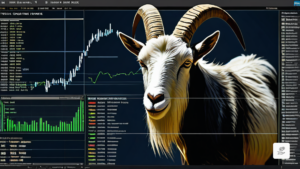Unveiling the Secrets of Currency Valuation: A Journey with the Big Mac Index

Understanding the Big Mac Index: A Culinary Compass for Currency Markets
In the realm of global finance, where currencies dance and exchange rates fluctuate, there exists an unconventional yet insightful tool that guides investors through the labyrinthine world of currency valuation: the Big Mac Index.
Conceived in 1986 by the esteemed Economist magazine, the Big Mac Index serves as an informal indicator, a culinary compass, if you will, that navigates the purchasing power parity (PPP) between different countries.
At its core, the Big Mac Index operates on a simple yet profound premise: the price of a Big Mac, that iconic McDonald’s creation, should be relatively consistent across borders when currency exchange rates are taken into account.
Decoding the Big Mac Index: A Mathematical Adventure
To calculate the Big Mac Index, we embark on a mathematical adventure, dividing the price of a Big Mac in one country by its price in another. This ratio, when compared to the official exchange rate, reveals valuable insights.
For instance, if a Big Mac costs $5 in the United States and 250 Mexican Pesos (MXN) in Mexico, the Big Mac Index is calculated as:
$5 / 250 MXN = 0.02 USD/MXN
Equating this to the official exchange rate, we arrive at 0.018 USD/MXN. This result indicates that the Mexican currency is undervalued against the US dollar, as the calculated rate exceeds the official rate.
The Allure of the Big Mac Index: A Versatile Tool for Investors
The Big Mac Index has garnered widespread appeal among investors due to its unique attributes:
Ubiquitous Presence: A Global Culinary Staple
The Big Mac, a culinary icon, graces the menus of McDonald’s restaurants in over 100 countries. This global presence ensures consistency in ingredients, price, and quality, making it an ideal benchmark for comparing purchasing power.
Inflationary Compass: Navigating the Ebb and Flow of Prices
The Big Mac Index serves as a valuable tool for tracking inflation trends over time. By comparing the price of a Big Mac in different countries, investors can gauge the relative purchasing power of currencies and assess the accuracy of official inflation figures.
Currency Valuation Oracle: Unraveling the True Value of Money
The Big Mac Index offers insights into whether a currency is undervalued or overvalued, empowering investors to make informed foreign exchange trades and navigate the complexities of global currency markets.
Data Savior: A Lifeline in Scarce Information Zones
In regions where reliable economic data is scarce or manipulated, the Big Mac Index emerges as a beacon of hope. It provides valuable information on currency valuation, aiding investors in making informed decisions even in data-poor environments.
Unveiling the Limitations: Navigating the Pitfalls of the Big Mac Index
While the Big Mac Index offers a unique perspective on currency valuation, it is not without its limitations:
Non-Tradable Goods: A Hidden Variable
The Big Mac Index focuses solely on a single product, overlooking the prices of non-tradable goods, such as housing and healthcare, which can vary significantly across countries.
Labor Costs: A Distorting Factor
The cost of labor, which influences the price of a Big Mac, can vary substantially between countries, potentially distorting the accuracy of the index.
Data Diversity: A Call for a Broader Perspective
Unlike comprehensive economic indicators like the Consumer Price Index (CPI), the Big Mac Index relies solely on a single data point, limiting its ability to capture the broader economic landscape.
Conclusion: The Big Mac Index – A Valuable Tool with Caveats
The Big Mac Index, while not a perfect measure of currency valuation, provides valuable insights into the relative purchasing power of different currencies. It is a simple yet effective tool that can assist investors in understanding global currency trends and making informed investment decisions.
However, it is crucial to acknowledge its limitations and use it in conjunction with other economic indicators to gain a more comprehensive view of the currency markets. With this balanced approach, the Big Mac Index can serve as a valuable compass, guiding investors through the ever-changing landscape of global finance.




